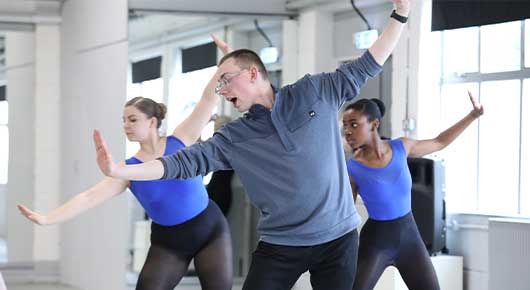31 August 2022
The three key areas of fair access, equality and inclusion, are some of our most important topics of discussion for the evolving society of the 21st century. It is of equal importance to have voices exploring and actioning these key topics at the forefront of the industry.
Although there have been notable developments, the standards surrounding accessibility within the industry need to be progressive. The aforementioned three key areas, kept at the centre of current and future decision-making, will ensure that the industry is accessible.
With regards to access to dance training, it is essential that the key areas of fair access, equality and inclusion that are currently in place are scrutinised. By doing so, it allows a reflective process to begin which will determine what measures need to be developed further.
The world is evolving at a rapid pace, however, there is an imbalance within this evolution. Progression across a broad variety of areas cannot necessarily evolve at the same rate, therefore, it is the responsibility of educators to remain progressive keeping accessibility as a core value. If educators are role-modelling these behaviours, one would hope that this would reflect on the current and future generations of students. By creating an inclusive industry and carrying these inclusive behaviours forward, students could become empowered to influence the generations of tomorrow. This is reason enough to make sure the three key areas are being targeted on a regular basis. Can we do better, did we do better? This could be a mantra each training programme asks itself weekly.
A positive way to approach the three key areas is to factor in an outreach programme as part of a dance training curriculum. It allows for a wider community to experience something that they may not ordinarily have access to. Through these programmes students can be nurtured through the regularity of classes, allowing them to experience professional training and a basic understanding of dance. It is an opportunity for them to discover another career path they may not have necessarily thought they could have embarked upon. Dance should be for everyone and it is important to break these barriers and misconceptions to enable the wider community more opportunities. However, what needs consideration is continuing fair access through into the main training system that the outreach programme is attached to. It would be the responsibility of the programme to make sure the equality of opportunity is carried forward enabling these outreach students to have an equal opportunity for a career in dance. For equality of opportunity to be truly cyclical, thought needs to be considered as to how the outreach programme(s) works alongside the main training programme.
Questions to consider:
What is the outcome?
What are the students learning?
How are they being engaged?
Does it reflect what is being taught in the main training programme?
Is there fair access to the main training programme if students aspire to have a career in dance?
What funding is in place to enable this?
Setting up an outreach programme comes with great responsibility, however, if it is well thought out then it is a remarkable resource for fair access, equality and inclusion.
Equality of opportunity at the heart of a curriculum design allows all stakeholders (staff and its students) to have a strong grasp of what the programme is wanting to achieve and what career prospects lie ahead. Having learner agency drive a programme alongside data from assessments, it enables students to attain to their highest ability. They may feel they have some ownership of their learning and this can create a strong, cooperative learning and teaching environment. Educators are able to be more responsive with an individualised approach to teaching, allowing a more flexible approach to the everyday environment of the classroom. With the use of examinations as part of a curriculum, the staff can guide their teaching towards the learning objectives whilst still creating a responsive and flexible classroom. Examinations also allow the programme to reflect on the attainment level of each individual and provide an opportunity to look at the attainment level as a collective group. Overall, this provides a clear assessment of the training being delivered and raises any areas that need challenging or adjusting to support learning and teaching.
For students, examinations encourage reflection. It begins the process of self-evaluation and critical thinking, two important skills to gain for a career in dance. These areas consolidate learning and empower students to evaluate their performance. They would use their subjective viewpoint, looking toward themselves on a personal level at how they felt they prepared and performed and contrast this to the data of the assessment ‘score sheet.’ With the use of self-evaluation and development of critical thinking alongside examinations, it allows students to build their skills physically and mentally ready for embarking on a career within the dance industry.









